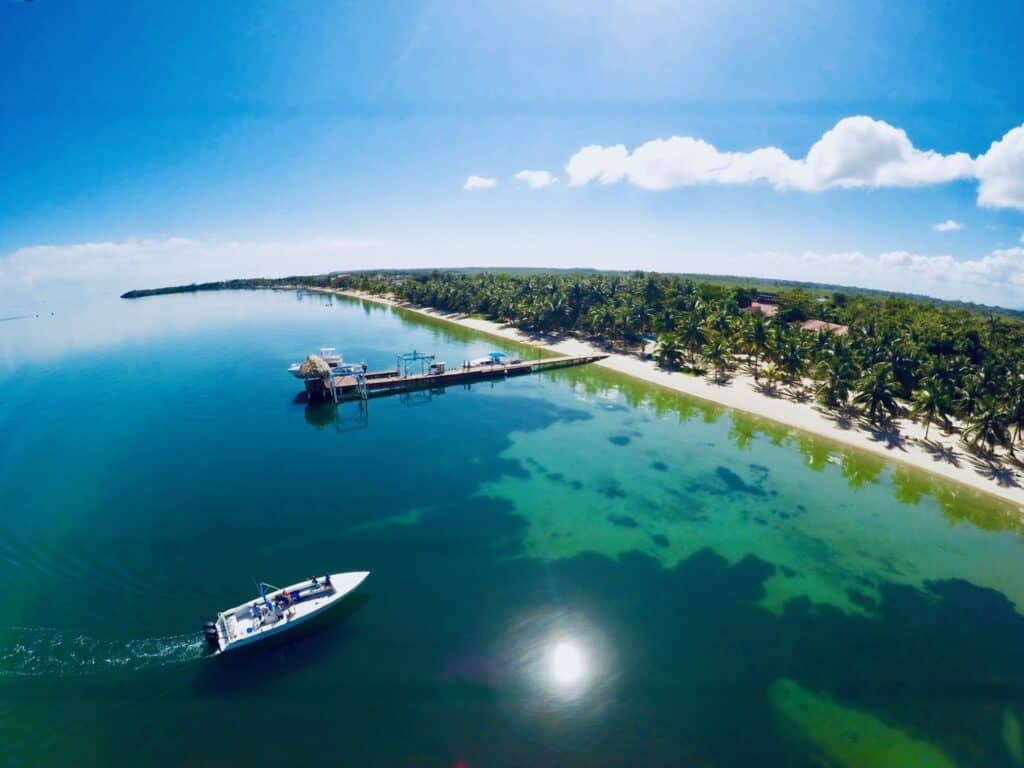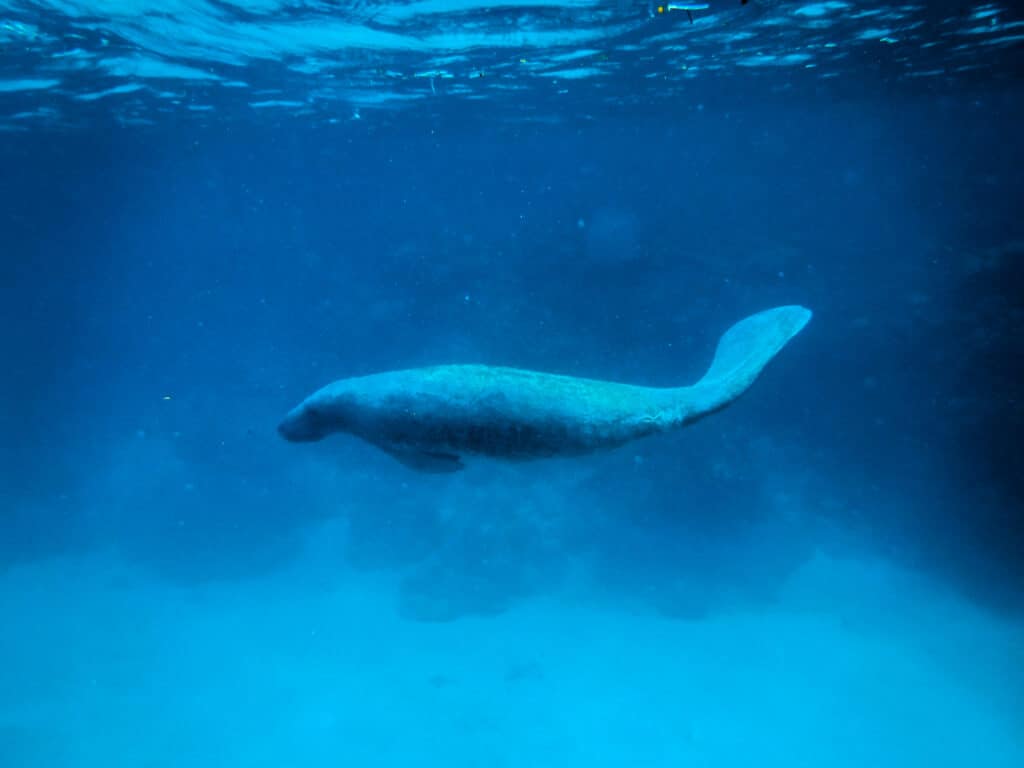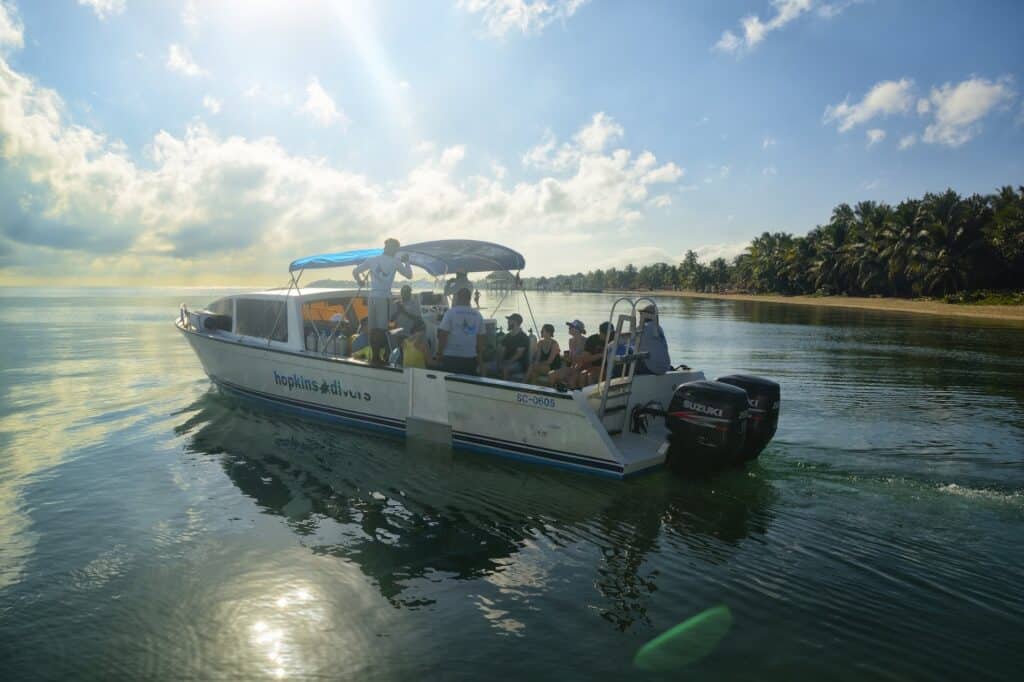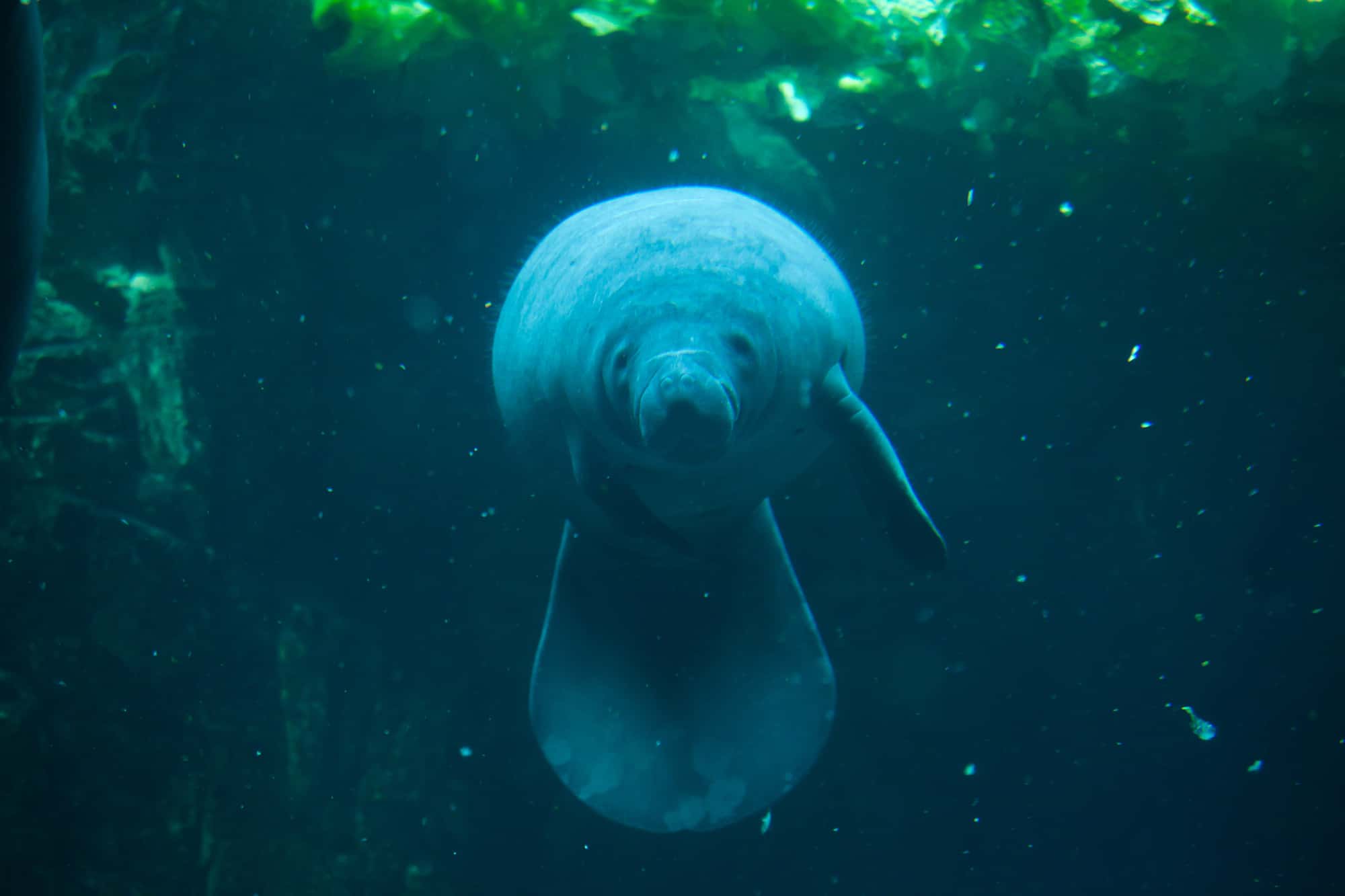“Look towards the horizon! It’s a dolphin! It’s a mermaid! No, It’s a… sea cow?!”
The sea cow is a local nickname for the shy and docile Antillean Manatee (Trichechus m. manatus). Their appearance is just as strange as their nickname. They are a large brownish-grey mammal that, much like a cow, rely on munching copious amounts of vegetation to sustain themselves. Antillean manatees range in size from a bulbous 9-13 feet long and weigh an astounding 1,000 – 3,500 lbs!
Fun Fact: Manatees have the smallest brain to body ratio of any mammal. It is not that Antlliean manatees are unintelligent, they are surprisingly adept. It’s that over time their bodies are disproportionately large to control their body temperatures. A diet heavy on vegetation and a lack of predators is theorized to also play a factor.
Manatees propel their large body mass through the water primarily with a flat paddle shaped tail at a whopping 5 miles per hour. Don’t be fooled, these gentle giants can reach up to speeds of 15 miles per hour for very short durations and only when needed. To reach the size and weight of a healthy adult manatee, they must consume 10% of their body weight daily! In fact, herbivorous manatees love eating so much that they are eating tasty seagrasses for most of their waking hours. Suddenly, it is so clear how they get their nickname!

The coastal waters along Hamanasi’s beachfront are rich in turtle grass and other types of sea grasses, making it the perfect feeding grounds for the Antillean manatee. Sightings of manatees from our dock are not an uncommon occurrence as both guests and guides have been lucky to see them dining on breakfast or dinner right from our property. They are easier to spot on a calm day, as you can see their hairy snouts break the water surface for a breath of fresh air.
The Antillean manatee’s habitat consists of the shallow coastal waters of the Gulf of Mexico and Caribbean. They can be found in rivers, lagoons, along the coast and even near the barrier reef, though they must remain close to a freshwater source to drink. Some guests have had the good fortune to spot the manatees while diving or snorkeling with the Hamanasi’s marine team. Can you imagine seeing this large and docile animal while snorkeling?! Incredible!

The warm waters of Belize provide the Antillean manatee an ideal habitat to thrive, and has led to a historically healthy population in the region. Manatees have no known predators, though recently their biggest threat is human activity. As human population increases, manatees are experiencing habitat loss and increasing exposure to collisions with watercraft. Due to manatees’ preference of shallow waters and river ways, as well as their leisurely speeds, boat collisions are a serious threat. Manatees also have a slow reproduction rate, only one calf is born every 2 to 5 years per mature female, contributing to the population decline over the years.
Two manatees leisurely swim by Hamanasi guests enjoying a morning of kayaking and paddle boarding
In Belize, the Antillean manatee is listed as endangered under Belize’s Wildlife Protection Act of 1981. Several NGOs are dedicated to protecting and advocating for the Antillean manatee. One organization is Wildtracks whose mission is to rehabilitate injured or orphaned manatees and release them back to the wild.

We cherish our manatee friends therefore our captains are always vigilant to be on manatee watch and travel slow when in their zones. We hope that you, too, will be able to spot one of these beloved creatures when you next are at Hamanasi!

